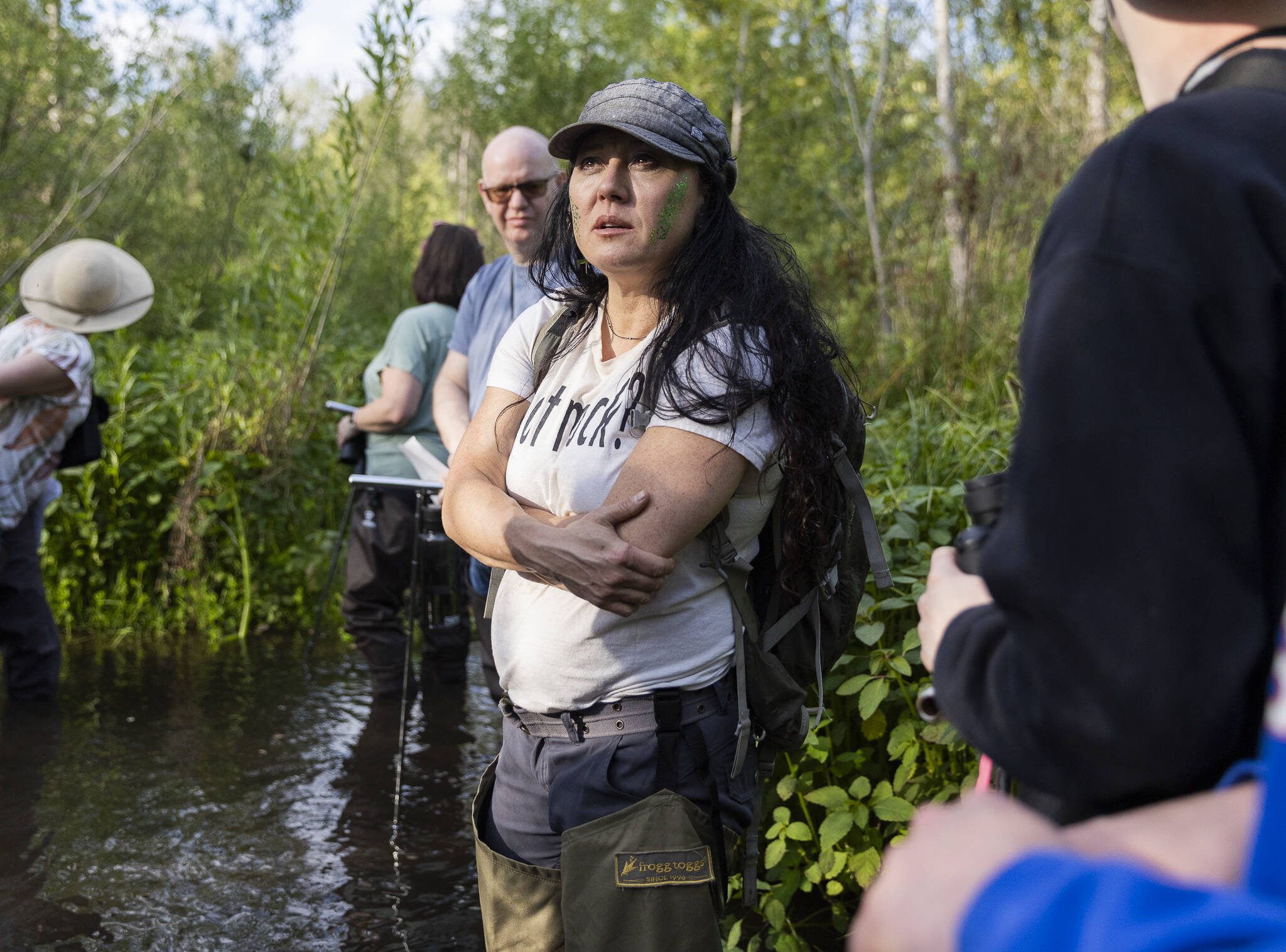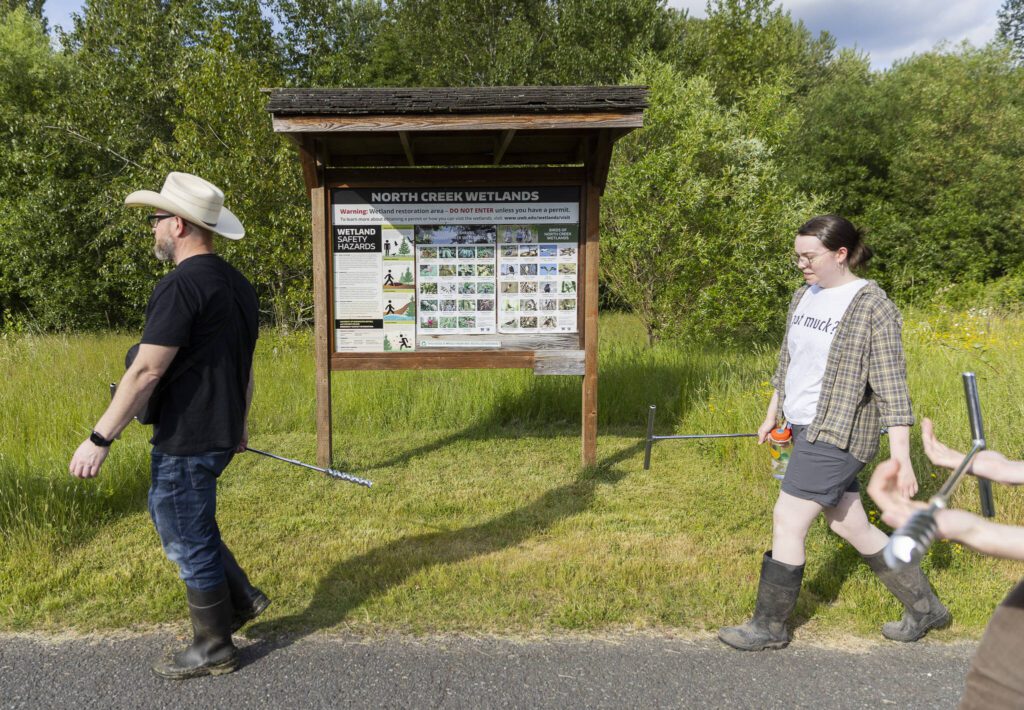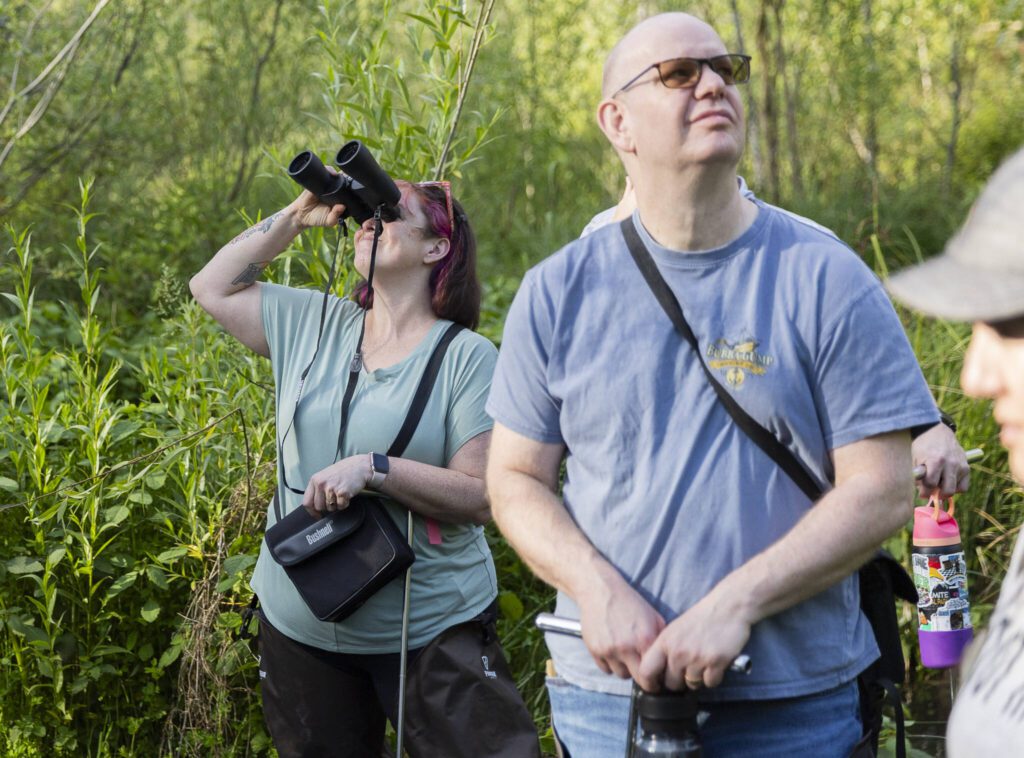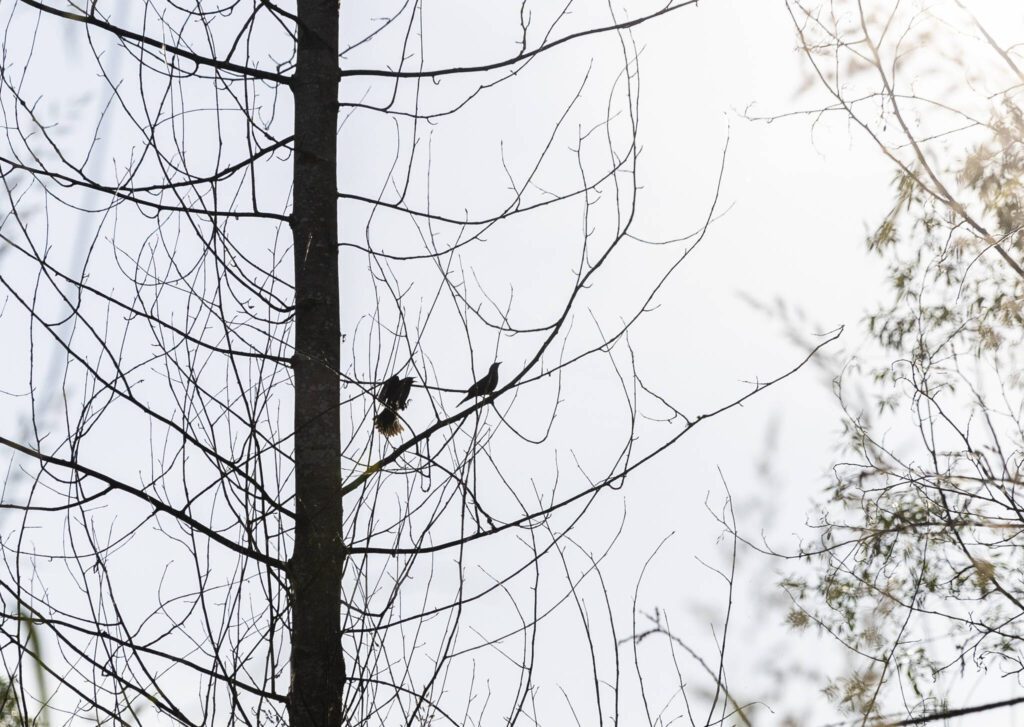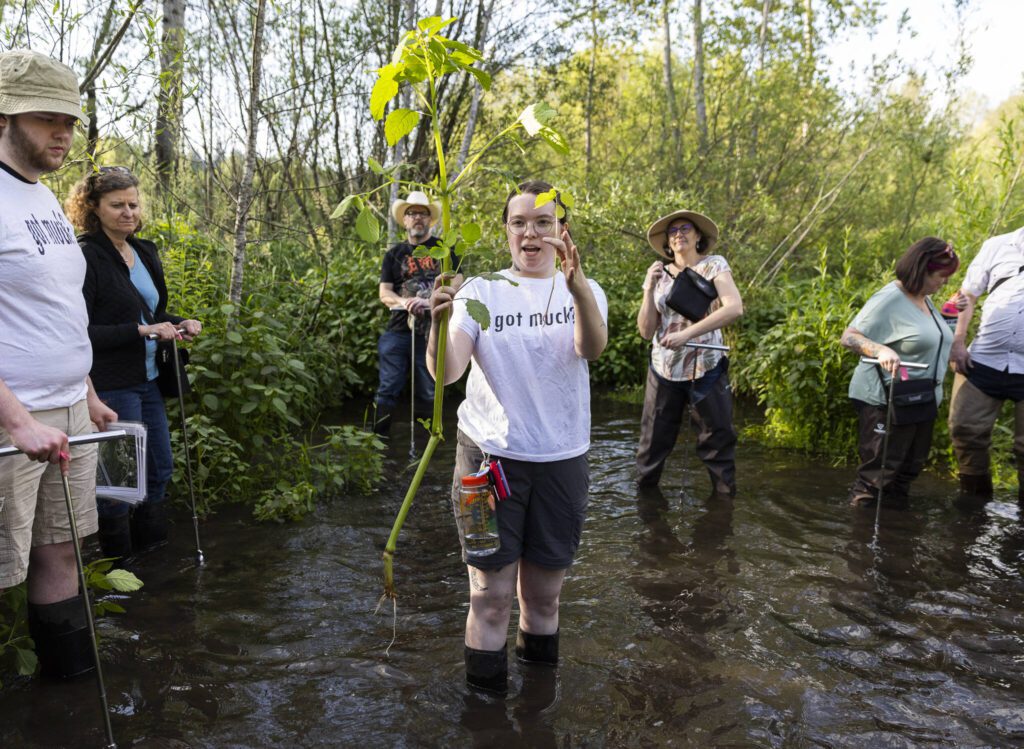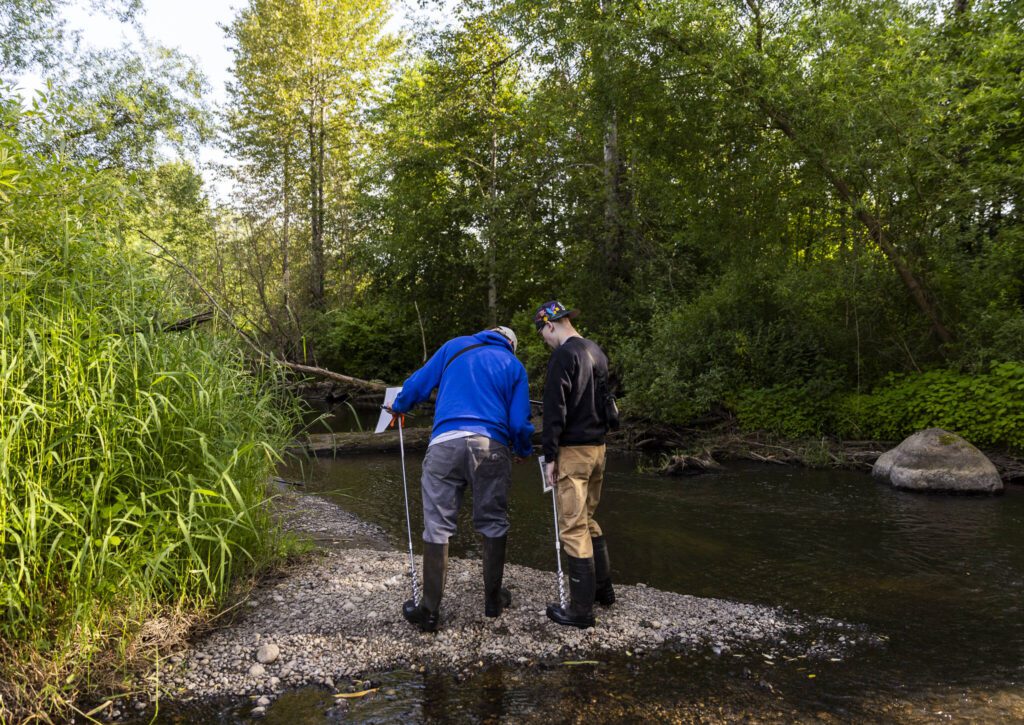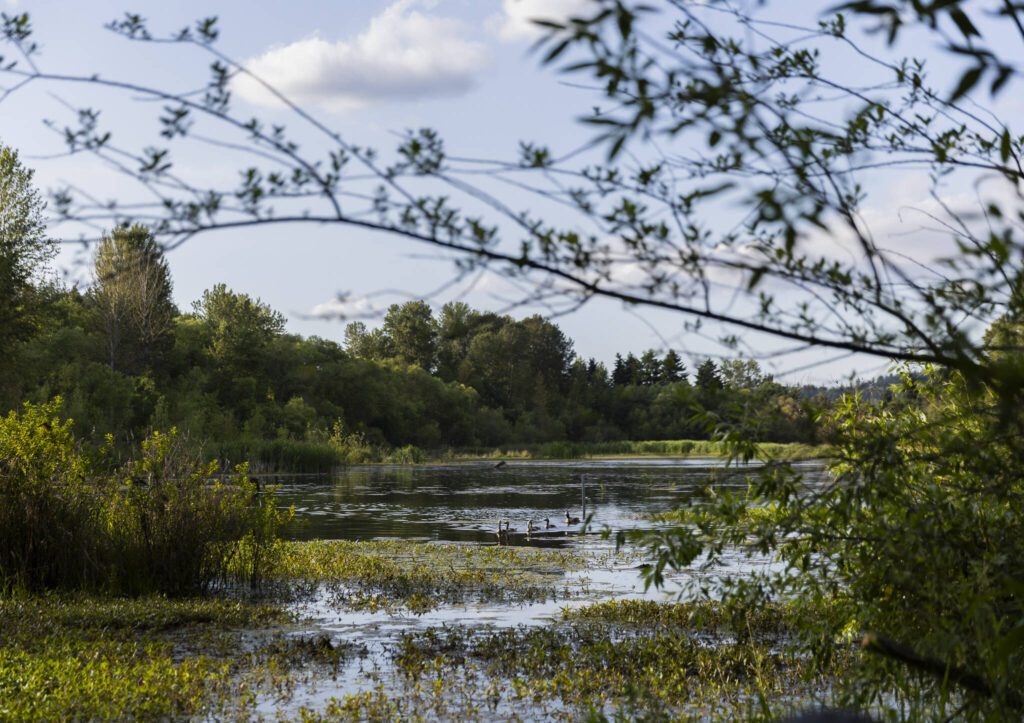BOTHELL — Knee-high boots sloshed through water and mud as a group of Cascadia College students led their families and friends through the North Creek wetlands.
After a term of learning about wetland ecology from Cascadia natural sciences professor Midori Sakura, the students stepped into the teacher role Wednesday, giving an educational tour of one of Washington’s largest and most complex floodplain restoration projects.
In the early 1900s, North Creek was channelized for logging, serving as a channel to float felled trees to Lake Washington. Later, the area was converted to agricultural fields, transforming a once ecologically diverse floodplain to crops fed by a system of ditches.
The state bought the land in 1993 from the Boone-Truly Ranch with plans of constructing Cascadia College and the University of Washington Bothell branch campus across the 127 acres. The campus design required environmental mitigation for some of the remaining wetlands that would be affected by construction, but instead of doing the bare minimum requirements, the state decided to restore 58 acres of the North Creek floodplain.
“We are pretty famous in the wetland science arena because we’ve done something that is kind of extraordinary and a little bit more unusual,” Sakura said to the group at the beginning of the tour. The state “went above and beyond what they had to do. Millions of dollars have been spent, and the product of this is we have this amazing restoration site.”
At the first stop, student Connor Norton lined the group up on solid land, making everyone jump.
“What did you notice?” Norton asked. Nothing, the group replied.
Norton then encouraged everyone to step into the water and repeat the jump. Instead of thudding into solid ground, family members described sinking, their force cushioned by the earth.
Using a large muck auger, in essence a giant metal spear used to collect soil samples, Sakura and the students showed the group the differences in the soil beneath everyone’s feet. The soil on high ground was grainy — you could hear the sand particles scratching against themselves if you moved the soil in your fingers close to your ears. In contrast, the soil underneath the water was soft and spongy.
The spongy material is peat, Norton said. The soil is created through an accumulation of decomposing organic material under water without much oxygen.
“Peatlands only cover about 3 percent of the Earth’s surface, so not insubstantial, but it’s not a ton, right?” Norton said. “But they hold 30 percent of the world’s carbon.”
Norton and the other students explained carbon storage is critical for combating climate change, adding to the importance of protecting and restoring wetlands and peatlands like the North Creek area. Degraded peatlands account for 5 percent of annual human-caused greenhouse gas emissions, according to Stanford research.
Throughout the tour, the students pointed out species and characteristics in the environment that make wetlands so special.
At the last stop, the group took a moment to take in the scene at the edge of Lake Truly, which looked something out of a storybook. At 7 p.m., the sun was just beginning to approach its golden hours. As it shone through the spring foliage, birds chirped and an American bullfrog croaked in the weeds. A family of geese swam through floating plants, a gaggle of teenage goslings tagging along after their mother.
“I feel like animals [are] a good way to get people to care about things because animals are so cute. They’re so charismatic,” Maggie Fogle, one of the ecology students, said after the tour, reflecting on how to engage people about wetland conservation.
Norton added that more than a third of the country’s endangered and threatened species live only in wetlands, and according to the Environmental Protection Agency, nearly half use wetlands at some point in their lives.
There are paved trails and boardwalks for people interested in visiting the wetland, and you can request a guided tour with wetland staff by reaching out to uwbsust@uw.edu.
Eliza Aronson: 425-339-3434; eliza.aronson@heraldnet.com; X: @ElizaAronson.
Eliza’s stories are supported by the Herald’s Environmental and Climate Reporting Fund.
Talk to us
> Give us your news tips.
> Send us a letter to the editor.
> More Herald contact information.
